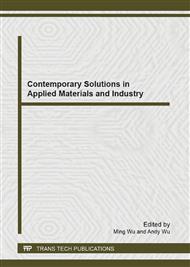p.3
p.8
p.15
p.20
p.25
p.31
p.35
p.39
p.44
The Ageing Characteristics and Strengthening Mechanism of a Cu-2.1Ni-0.5Si-0.2Zr-0.05Cr Alloy
Abstract:
The ageing process of a Cu-2.1Ni-0.5Si-0.2Zr-0.05Cr alloy in the temperature range from 673 K to 773 K is investigated in this research. The phase transformation process, electric conductivities and mechanical properties during the ageing process are also studied by experimental methods. The precipitation sequence during the aging process of Cu-Ni-Si alloy is GP zone→ (Cu,Ni)3Si→ δNi2Si phase. The conductivity of the aged specimen increases from 20% IACS to 40-45% with prolonging time during aging process in the temperature range from 673 K to 773 K. The dynamic curve of precipitation is obtained by Avrami-equations, based on which the increase of yield strength can be estimated according to Orowan mechanism. Experimental data have been compared with the calculated results in this paper, indicating this method is reasonable, suggesting that strengthening is mainly attributed to Orowan by passing mechanism.
Info:
Periodical:
Pages:
25-30
Citation:
Online since:
April 2013
Authors:
Keywords:
Price:
Сopyright:
© 2013 Trans Tech Publications Ltd. All Rights Reserved
Share:
Citation:


